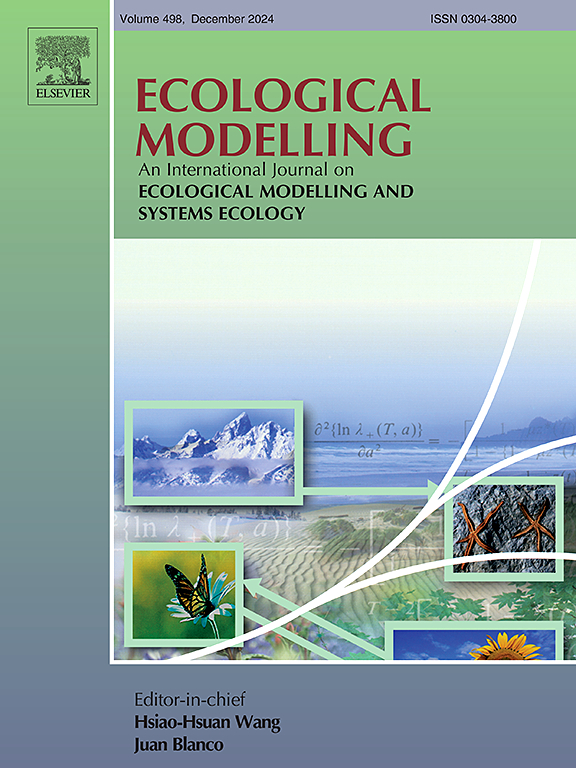Uncertainties in future ecosystem services under land and climate scenarios: The case of erosion in the Alps
IF 2.6
3区 环境科学与生态学
Q2 ECOLOGY
引用次数: 0
Abstract
How ecosystems will provide ecosystem services in the future given uncertain changes in climate and land use is an open question that challenges decision-making on adaptation to climate change. Prospective assessments of ecosystem services should carefully include and communicate the sources of uncertainties that affect the predictions. We used the ecosystem service of soil protection against erosion in the Maurienne Valley (French Alps) as a case study to illustrate how several sources of uncertainties can be integrated into an assessment of future ecosystem service supply. We modeled future erosion rates in the Maurienne Valley for years 2020 and 2085 using the Revised Universal Soil Loss Equation (RUSLE) and six climatic and socioeconomic scenarios. We quantified how the ecosystem service supply will be likely affected by climate and land-use change, separately and jointly. We assessed the effects of different sources of uncertainty on projected erosion rates: scenarios, climate models choice, and methods to parametrize the ecosystem service model. Land-use change increased erosion (+ 3.3 ton.ha-1.yr-1 on average, with significant increases in 81 % of the study site), while climate change contributed to a slight reduction (-0.21 ton.ha-1.yr-1 on average with significant decrease 20 % of the study site). The uncertainty of the ecosystem service model parameterization explained 93 % of the variance in erosion values. Furthermore, uncertainty linked to climate models and future scenarios contributed almost equally to the variability in the direction (positive or negative) of erosion change (41 % and 38 % respectively). The uncertainties surrounding the direction of future changes in ecosystem services come mainly from uncertainties in climate models and future scenarios rather than from uncertainties in the ecosystem service model parameters. Assessing the likelihood of future changes in ecosystem services helps prioritize locations where adaptation solutions are likely to be needed.

求助全文
约1分钟内获得全文
求助全文
来源期刊

Ecological Modelling
环境科学-生态学
CiteScore
5.60
自引率
6.50%
发文量
259
审稿时长
69 days
期刊介绍:
The journal is concerned with the use of mathematical models and systems analysis for the description of ecological processes and for the sustainable management of resources. Human activity and well-being are dependent on and integrated with the functioning of ecosystems and the services they provide. We aim to understand these basic ecosystem functions using mathematical and conceptual modelling, systems analysis, thermodynamics, computer simulations, and ecological theory. This leads to a preference for process-based models embedded in theory with explicit causative agents as opposed to strictly statistical or correlative descriptions. These modelling methods can be applied to a wide spectrum of issues ranging from basic ecology to human ecology to socio-ecological systems. The journal welcomes research articles, short communications, review articles, letters to the editor, book reviews, and other communications. The journal also supports the activities of the [International Society of Ecological Modelling (ISEM)](http://www.isemna.org/).
 求助内容:
求助内容: 应助结果提醒方式:
应助结果提醒方式:


